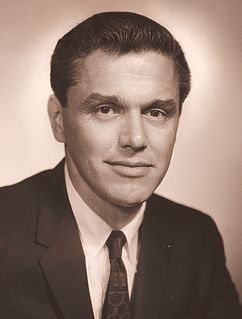

A Temperley transporter is an early form of overhead crane invented by John Ridley Temperley in 1892. [1] They were manufactured by the Temperley Transporter Company of London. [2]


A Temperley transporter is an early form of overhead crane invented by John Ridley Temperley in 1892. [1] They were manufactured by the Temperley Transporter Company of London. [2]

William Smith Otis was an American inventor of the steam shovel. Otis received a patent for his creation on February 24, 1839.

A crane is a type of machine, generally equipped with a hoist rope, wire ropes or chains, and sheaves, that can be used both to lift and lower materials and to move them horizontally. It is mainly used for lifting heavy things and transporting them to other places. The device uses one or more simple machines to create mechanical advantage and thus move loads beyond the normal capability of a human. Cranes are commonly employed in transportation for the loading and unloading of freight, in construction for the movement of materials, and in manufacturing for the assembling of heavy equipment.

Hyundai Heavy Industries Co., Ltd. is the world's largest shipbuilding company. Its headquarters are in Ulsan, South Korea. HHI was founded in 1972 by Chung Ju-yung as a division of the Hyundai Group, and in 1974, completed building its first ships. In 2002, the company was spun-off from its parent company. HHI has four core business divisions: Shipbuilding, Offshore & Engineering, Industrial Plant & Engineering, and Engine & Machinery. HHI also has five non-core related subsidiaries: Hyundai Electric & Energy Systems, Hyundai Construction Equipment, Hyundai Robotics, Hyundai Heavy Industries Green Energy, and Hyundai Global Service.

A dragline excavator is a piece of heavy equipment used in civil engineering and surface mining.

Winthrop Murray Crane was a U.S. political figure and businessman.

Siemens Brothers and Company Limited was an electrical engineering design and manufacturing business in London, England. It was first established as a branch in 1858 by a brother of the founder of the German electrical engineering firm Siemens & Halske. The principal works were at Woolwich where cables and light-current electrical apparatus were produced from 1863 until 1968. The site between the Thames Barrier and Woolwich Dockyard has retained several buildings of historic interest. New works were built at Stafford in 1903 and Dalston in 1908.

Glucose transporters are a wide group of membrane proteins that facilitate the transport of glucose across the plasma membrane, a process known as facilitated diffusion. Because glucose is a vital source of energy for all life, these transporters are present in all phyla. The GLUT or SLC2A family are a protein family that is found in most mammalian cells. 14 GLUTS are encoded by human genome. GLUT is a type of uniporter transporter protein.

Marion Power Shovel Company was an American firm that designed, manufactured and sold steam shovels, power shovels, blast hole drills, excavators, and dragline excavators for use in the construction and mining industries. The company was a major supplier of steam shovels for the construction of the Panama Canal. The company also built the two crawler-transporters used by NASA for transporting the Saturn V rocket and later the Space Shuttle to their launch pads. The company's shovels played a major role in excavation for Hoover Dam, the Holland Tunnel and the extension of the Number 7 subway line to Main Street in Flushing, Queens.
Chichester Alexander Bell (1848–1924) was a chemist, first cousin of Alexander Graham Bell, and instrumental in developing improved versions of the phonograph.
Sodium-dependent glucose cotransporters are a family of glucose transporter found in the intestinal mucosa (enterocytes) of the small intestine (SGLT1) and the proximal tubule of the nephron. They contribute to renal glucose reabsorption. In the kidneys, 100% of the filtered glucose in the glomerulus has to be reabsorbed along the nephron. If the plasma glucose concentration is too high (hyperglycemia), glucose passes into the urine (glucosuria) because SGLT are saturated with the filtered glucose.
Lithgows Limited, is a family-owned Scottish company that had a long involvement in shipbuilding, based in Kingston, Port Glasgow on the River Clyde in Scotland. It has a continued involvement in marine resources.
The Massachusetts Republican Party (MassGOP) is the Massachusetts branch of the U.S. Republican Party.

In road transport, an oversize load is a load that exceeds the standard or ordinary legal size and/or weight limits for a truck to convey on a specified portion of road, highway or other transport infrastructure, such as air freight or water freight. In Europe it may be referred to as special transport or heavy and oversized transportation. There may be load per axle limits. However, a load that exceeds the per-axle limits, but not the overall weight limits, is considered overweight. Examples of oversize/overweight loads include construction machines, pre-built homes, containers, construction elements.

A self-propelled modular transporter or sometimes self-propelled modular trailer (SPMT) is a platform vehicle with a large array of wheels. SPMTs are used for transporting massive objects such as large bridge sections, oil refining equipment, cranes, motors, spacecraft and other objects that are too big or heavy for trucks. Trucks can however provide traction and braking for the SPMTs on inclines and descents.
The Imperial Tramways Company Ltd was created to bring under common management a number of street tramways. Originally based in London, its headquarters moved to Bristol in 1892 and from then on it shared its senior management with Bristol Tramways under the chairmanship of George White.

Sir William Arrol & Co. was a leading Scottish civil engineering and construction business founded by William Arrol and based in Glasgow. It built some of the most famous bridges in the United Kingdom including the second Tay Bridge, the Forth Bridge and Tower Bridge in London.

Robert Kellogg Crane was an American biochemist best known for his discovery of sodium-glucose cotransport.
The 1892 Dissolution Honours List was issued in August 1892 following the general election of that year.
|journal= (help)